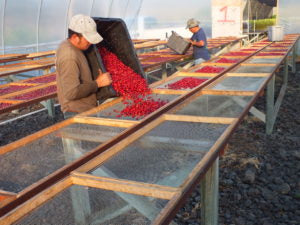Time for a Brewing Checkup
January is a good time to review your brewing to see if you are losing out on flavor. It is not uncommon for coffee lovers to ignore slight changes in flavor that multiple over time. We often get complaints about out medium roast coffees from customers who have been drinking dark roast coffees. When they switch to medium roasts, they can taste the off flavors in their brewing that they were missing in the dark roasts.
Periodically checking temperature, extraction time and cleanliness can improve the flavor of your coffee.
Temperature
Great coffee is normally brewed at between 195- and 205-degrees Fahrenheit. Most hot water pots and automatic brewers have thermocouples that control the water temperature. After a while the thermocouple begins to wear out and the temperature drops. You need to take a thermometer (a meat thermometer will work) and check the brew water temperature. If the temperature is significantly below 195 your coffee will taste thin and sour. The only solution is to throw the old brewer out and get a new one. You cannot get them repaired.
Extraction Time
Brewing coffee is all about extraction. As coffee grounds are immersed in hot water, first, the fats and acids are dissolved, then the sugars, and finally plant fiber. The initial extraction flavors are sour. As the extraction continues the flavor becomes sweeter. However, the last extraction flavors are bitter. Obviously, the best extraction strategy is to extract until the sugars are dissolved and then stop.
Controlling extraction time in some brewers is impossible, e.g., espresso, Keurig, Mr. Coffee. You have to take what the manufacturer gives you. In manual pour over, French press, and siphon you can measure the extraction time and change it to your taste.
There is no universal correct extraction time. Different coffees, different roasts, different crop years all have a unique ideal extraction time for your palate. If you can vary the extraction time, this is a good time to evaluate and reset your extraction times.
Cleanliness
Coffee Equipment
Any brewing equipment e,g, canisters, pour over holders, cups, spoons etc. that contacts coffee is going to be coated with oil and maybe other things after you use it. All equipment should be cleaned before reuse. Soap and hot water work well, citric acid or white vinegar work even better,
Automatic Brewer
Automatic coffee brewers (e.g., Mr Coffee), pod brewers (e.g., Senso) and capsule brewers (e.g., Keurig) are incredibly convenient and fast. However, the reservoirs and the tubing in all automatic coffee brewers develop scale, mold and fungus that must be cleaned out regularly. Coffee brewers are wet and warm. After you brew your coffee, the coffee maker sits with warm water in the reservoir and the tubing. It is a perfect place to grow mold and fungus.
Fill the brewer’s reservoir with white vinegar and run the brew cycle until it is all out. Don’t forget to open the window, the fumes will clean out your sinuses too. Then fill the reservoir with clean, fresh water and run the brew cycle. If you get black stuff in the clean water, you should repeat the vinegar cycle.
Grinder
Coffee grounds are oily. They build up in the grinder and turn rancid. Every time you grind, some of those rancid grounds are dislodged and get into your brew basket. We recently bought a used grinder. The owner said it didn’t work. We had to chip moldy, rancid coffee out of the grind chamber and the exit tube. No one had ever cleaned the grinder.
You don’t have to take the grinder apart to clean it. There are commercial grinder cleaner pellets on the market. You run them through the grinder, and they dislodge the old coffee on the sides and the burrs.
Bob Appetit

